Hosted by
Architecture
Books on architecture, interior architecture, architectural theory, architectural history.
All Books

The Festival of Britain is perhaps best known for its South Bank Exhibition promoting British science and art to the post-war world, but one of the most important elements was the Architecture Exhibition, based in Poplar in East London. This exhibition was used to demonstrate the principles of modern town planning that had been laid out by Abercrombie, in particular in his County of London Plan.
The project was named after George Lansbury, the Labour MP, London County Council (LCC)...

With over 40 years of experience as a lecturer, architect and driver of architectural policy, Thijs Asselbergs looks ahead in About the new architect. In response to conversations with students, Asselbergs shares his personal perspective on the profession and explains how ‘the new architect’ should be shaped.
In 2008, when Thijs Asselbergs had just taken up his position as professor at Delft University of Technology (TU Delft), the investment bank Lehman Brothers collapsed. It...

The silhouettes of the great European metropolises are characterised by a high density of high-rise facades made of glass, metal or stone. On one hand this density stands for economic power and good employment values. On the other hand, the large sound-reflecting surfaces in the cities are responsible for an increase in sound pollution in their vicinity. They cause the most frequent inner-city sound source, traffic noise, to double in perceived intensity. Direct sound and...

This thesis proposes a framework to address the design process in design education. Building upon the assumption that teachers, being professional designers, do not discuss the design process in the architectural design studio and do not have a vocabulary to do so, five generic elements or anchor points are defined which represent the basic design skills. The validity of the framework and the assumption is tested respectively in interviews with a variety of designers and in observations of...
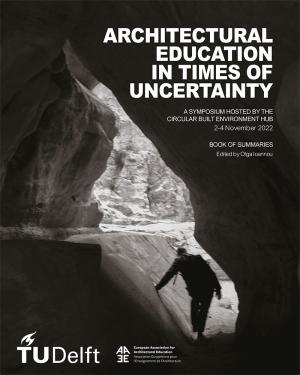
Architecture and, by extension, architectural education are severely challenged by the scale and magnitude as well as the complexity of current criticalities. The climate breakdown, the loss of biodiversity, and the impending resource depletion call for a radical rethinking of what is inherent to architecture, but also of how architecture relates to the economy, society, and nature. The certainties our profession has long relied upon are becoming less and less convincing. Technology alone...

Massive urbanization puts pressure on public space and demands new programs along with alternative gathering places such as public interior spaces and a variety of forms of collective spaces. Moreover, in the rapidly changing city, infrastructure and mobility remain of vital importance. A coevolving diversity of program cannot be planned, but interventions in the city need constantly to be grounded on sharp design approaches to respond adequately to the necessities of the time–while being...

This publication provides an overview of TU Delft’s most significant research achievements in the field of architecture and the built environment during the years 2010—2012. It is the first presentation of the joint research portfolio of the Faculty of Architecture and OTB Research Institute since their integration into the Faculty of Architecture and the Built Environment. As such the portfolio holds a strong promise for the future. In a time when the economy seems to be finally picking...

This publication provides an overview of TU Delft’s and Berlage’s most significant research achievements in the field of architecture and the built environment, produced over the years 2003—2009. The publication is produced in preparation for the Dutch 2010 research assessment exercise Architecture and the Built Environment.
It is the first joint publication by Architecture, OTB and Berlage and hints clearly at stronger future ties between the three institutes, which are...

Although the German-American philosopher Hannah Arendt never addressed architecture specifically, her writings very well can help us to rethink architecture as a spatial, cultural and political phenomenon and practice. Arendt’s work after all is remarkable spatial: behind all of her writings is a particular concern about the ‘world and its inhabitants’ tangible. Arendt once used this phrase to describe the writings of her teacher, the German philosopher Karl Jaspers. His writings were...

Die jí¼ngste Deregulierung der Gesetze in den Niederlanden in Bezug auf Krankenhausimmobilien impliziert dass Institutionen der Gesundheitspflege mehr Mãglichkeiten haben Einrichtungsentscheidungen zu treffen, wobei sie jedoch gleichzeitig selbst die Verantwortung fí¼r die Risiken in Verbindung mit den Investitionen í¼bernehmen mí¼ssen. Zusätzlich wurden Einrichtungskosten integraler Bestandteil der Kosten der Gesundheitsversorgung. Dies gibt Aufschluss í¼ber die Angleichung zwischen der...
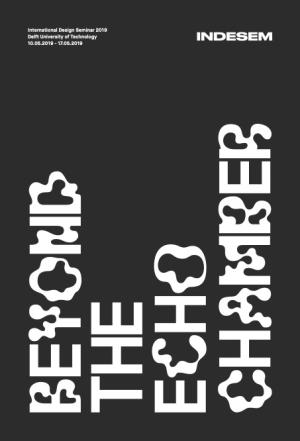
INDESEM - International Design Seminar - is a biennial with workshops, lectures and debate founded in 1962 and re-initiated in 1986 by Herman Hertzberger. This publication reviews and reflects on the 2019 edition of the seminar; explorations on the position of the architect in a rapidly developing, (digitally) connected society. Nowadays, the amount of available knowledge to designers is becoming sheer endless. Whether or not willingly, this forces designers, architects and urban planners...

Over the years 2010-2015 TU Delft's Faculty of Architecture and the Built Environment (in Dutch: Bouwkunde or BK) made good progress with its research by:
- merging the Architecture faculty and the Built Environment research institute;
- streamlining its PhD research by setting-up a graduate school for doctoral education;
- co-founding an institute for metropolitan solutions in Amsterdam together with MIT and Wageningen University (targeted yearly budget: 25...

Recent deregulation of laws on hospital real estate in the Netherlands implies that healthcare institutions have more opportunities to make independent accommodation choices, but at the same time have themselves become responsible for the risks associated with the investment. In addition, accommodation costs have become an integral part of the costs of healthcare. This sheds new light on the alignment between the organisation of healthcare and accommodation: care institutions themselves...

In this booklet, the architectural theorist and Professor at York University Abidin Kusno discusses two lectures given by two influential professors in the former Dutch colony of Indonesia. The first one, ‘The aesthetics of architecture and the art of the moderns’, was given by C. Wolff Schoemaker in 1930. The second, entitled ‘Towards an Indonesian Architecture’, was delivered by Vincent Van Romondt in 1954. Schoemaker and Van Romondt held different views on the challenges of architecture...

This thesis looks at how cities operate as Complex Adaptive Systems (CAS). It focuses on how certain characteristics of urban form can support an urban environment's capacity to self-organize, enabling emergent features to appear that, while unplanned, remain highly functional. The research is predicated on the notion that CAS processes operate across diverse domains: that they are ‘generalized' or ‘universal'. The goal of the dissertation is then to determine how such...

The ROCK project sees historic city centres as laboratories to demonstrate how Cultural Heritage can be an engine of regeneration, sustainable development and economic growth. ROCK approach foresees the systemic and flexible application of a series of role-model practices in the testing sites of three Replicator cities, to turn historic city centres afflicted by physical decay, social conflicts and poor life quality into Creative and Sustainable Districts. This...

DASH (Delft Architectural Studies on Housing) is a new journal that is wholly devoted to residential design. The point of departure is the Dutch tradition and contemporary practice, but the journal also addresses international developments. DASH will be published twice a year in a bilingual English/ Dutch edition.
This first issue of DASH is about semi-public space around residential buildings, which is publicly accessible in principle, while at the same time it has a more private...

The second issue of DASH focuses on the emergence of the luxury city apartment. The articles range from historical explorations of luxurious apartments built in Paris and London in the late 19th century and the full-service apartments realized in The Hague in the early 20th century to the emergence of enclaves for the wealthy in Brazil. There is also an article comparing the Dutch market with the market in Berlin and an account of the turbulent history of a luxury apartment complex in the...

With its recognizable structures, informal surrounding spaces, special traffic rules and widespread application, the concept of the woonerf or home zone came to prominence in the Netherlands in the 1960s and 70s. It represents one of the most characteristic concepts with regard to the design of residential areas and has become firmly rooted socially. The underlying themes of the woonerf small-scale collectivism, greenery and ecological patterns along with the connection between outdoor...

This edition of DASH searches for about the best floor plan between standard and ideal. One that meets the (changing) needs of the resident, and is optimal for architects and real estate entrepreneurs. A housing that meets both individual needs, but also benefits from the production scale and technical advantages of standard housing. Is a merger of these requests possible?DASH investigates and comes up with new ideas.
Though mass customization has for some time been the magic word...

The idea of the pluriform city seems more current than ever. Society was still homogeneous 50 years ago; today highly divergent modes of life and culture are all seeking a place within our cities. The Urban Enclaveis the product of an investigation into large-scale housing projects in the inner city, both historical and contemporary. This calls for a city with differences of its own, distinctive parts in which like-minded people can find one another, connected to the greater whole, but...

What are the reasons for architects in different times, regions and circumstances harking back to images, forms or construction methods from the past? And what means do architects employ in order to achieve the intended effect? These are the pivotal questions in this sixth issue of DASH. Reverting to the architectural past is hardly a new phenomenon. Old forms have served as inspiration at many junctures in the history of architecture: as a protest against dominant views, as a means to...

Construction is responsible for about 20 per cent of total carbon dioxide emissions and 30 per cent of energy demand; this ranks it alongside the chemical and transport industries among the biggest polluters. Sustainability is therefore one of the most significant issues for designers and architects, as well as a challenging field for innovation and research.DASHgoes in search of the ideal eco house: from solar houses to Superuse, from Cradle-to- Cradle to support-infill systems and...
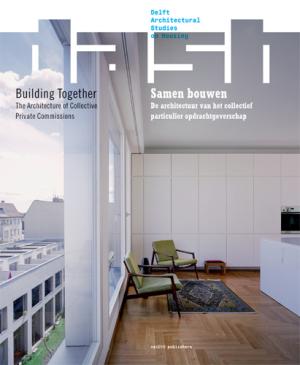
Are collective commissions the answer for the housing market?
Several municipal governments in the Netherlands are looking closely at collective private building commissions. By stimulating private individuals to form commissioning collectives, cities like Almere and Amsterdam hope to relaunch the jammed housing market. In this they are taking a step towards what has been routine in Germany for many years under the name Baugruppen. DASH Building Together examines, in several essays...
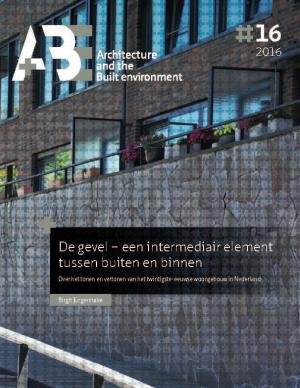
This study is based on the fact that all people have a basic need for protection from other people (and animals) as well as from the elements (the exterior climate). People need a space in which they can withdraw from the rest of the world. The two states, inside and outside, public and private, contact with, or isolation from, the outside world, are relevant in fulfilling this basic need. People also want their home to have a certain appearance or status which they can identify with and...

‘De toekomstige rol van de architect’ beschrijft de essentie van onze wetenschappelijke verkenning naar nieuwe rolstructuren in de Nederlandse architectenbranche. Deze verkenning is uitgevoerd in het kader van het futurA project, dat verwijst naar future value chains of architectural services. Vier jaar lang hebben we vanuit de Technische Universiteit Delft en Radboud Universiteit Nijmegen in nauwe samenwerking met de BNA onderzoek gedaan naar de toekomstbestendigheid van de rollen die...

The idea of this lecture series is to enable various full professors, associate professors and researchers to present their positions held in architectural design within the faculty’s master track in architecture. Next to their collaboration in the actual lectures, the faculty staff each has handed in a contribution to this reader, in which the lecturers reflect upon both contemporary key problems within the field of architecture and/or their own sources of inspiration and...

The research investigates How can the morphological approach in combination with the pattern language approach assist urban designers to achieve historical continuity in urban design both on theory and application levels.
This research overviews the developments and applications of the two approaches worldwide with a special emphasis on the Dutch school. The Dutch morphological reduction technique and the Dutch interpretation of a pattern language are used in the case study–Wuhan,...

Throughout his career, Herman van Bergeijk built his own unique expertise on the Dutch 19th and early 20th century architectural history. He has become an inspiration for scholars in the Netherlands, Europe and beyond. The extraordinary response of colleagues when asked to contribute a chapter in this Festschrift stands as an example of Herman’s widespread influence. Invitations for keynotes and lectures or courses keep reaching him, and he will continue to teach and write. He has an open...

The urban heat island (UHI) phenomenon and the dependency of buildings onÀ¨fossil fuels were the two main issues that formed this dissertation. UHI results in higher air temperatures in dense urban areas compared with their suburbs and rural surroundings. This phenomenon affects human health through thermal discomfort. Furthermore, in the Netherlands, it is estimated that by 2050 the air temperature could be up to 2.3°C warmer as compared to the period of 1981-2010. Besides, the energy...

The conference ‘For Example Delft’ addresses approaches in architecture education, their past, present & future in relation to professional practice and the architectural discipline. Using the example of Delft, the conference starts from the observation that the broad field of architecture and the built environment carries a re-assembled character that has lost its Modern, structured and disciplinary way. Moreover the conference addresses the issue what architecture research currently...

This research aims to develop user-focused design principles for energy-efficient office renovations. The goal of this is to improve the quality and comfort of workspaces without compromising on energy-saving goals. Due to increasing sustainability requirements, new ways of working and changing office user preferences, there is a growing need for office renovations that not only deal with the energy performance and the replacement of building facilities, but also the occupants’ health and...

Potentials of a virtual environment for enhancing the creativity of architects have shaped this research. There is no singular definition of creativity. In fact, there are more than 100 different definitions of creativity according to different contexts and disciplines. Nevertheless, it is possible to confine the boundaries of definitions and address creativity within a confined framework.
The first practical step was thus to perform an in-depth...

Subject
Evidence-Based Design in hospitals.
Problem
What role can Evidence-Based Design have in the design of better hospitals?
Purpose
To determine spatial (or: concrete) qualities, scientifically proven to have a positive influence on the health and well being of patients and staff, in order to offer the architect a helping hand for designing better hospitals. These measures are drawn from research...

In its parallel pursuit of an increased competitivity for design offices and more pleasurable and easier workflows for designers, artificial design intelligence is a technical, intellectual, and political challenge. While human-machine cooperation has become commonplace through Computer Aided Design (CAD) tools, a more improved collaboration and better support appear possible only through an endeavor into a kind of artificial design intelligence, which is more sensitive to the human...

The springing up of freeform architecture and structures introduces many challenges to structural engineers. The main challenge is to generate structural forms with high structural efficiency subject to the architectural space constraints during the conceptual structural design process.
Structural Morphology is the study of the relation between form and force, which can be considered the guiding theory for this challenge. The relation between form and force is important for all...
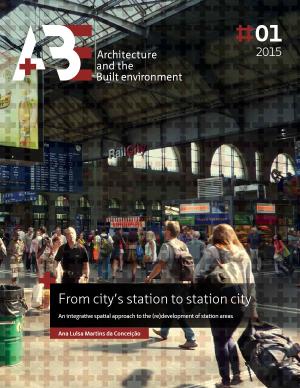
Since its origin, the railway station has had a complicated relationship with the city, demanding periodical updates, particularly regarding spatial issues. With the aim of improving the liveability of station areas, current redevelopment projects are reconceptualising them as balanced transport ‘nodes’ and ‘places’ in the city. However, the proposed spatial solutions do not fully support the sought after economic, social and environmental performances. These intentions continue to be...

‘Future Roles for Architects’ describes the core insights from a research project into new role structures in the Dutch architectural sector, conducted as part of the futurA project on “future value chains of architectural services”. For four years a joint team from Delft University of Technology and Radboud University in Nijmegen, working in close collaboration with BNA, the Royal Institute of Dutch Architects, studied the future of the professional roles performed by architectural firms...

This volume is the editorial product of the project “Gentrification and Crime. New Configurations and Challenges for the City” started by a public conference held on May 6, 2019 at the Municipal Historical Archive of Palermo. This event was organized by Locus and endorsed by private and public bodies. During the conference, four presentations were given by distinguished academics of main fields investigated: Giovanni Semi, Marco Picone, Adam...

In 2002, Gunawan Tjahjono opened his inaugural speech at University of Indonesia with a reference to Vincent Van Romondt, the last remaining Dutch tutor of architecture in Indonesia, who had pioneered an approach that challenged Indonesians to think about the relationship between architecture and ‘nationbuilding’. Since independence, the topic of ‘towards an Indonesian architecture,’ has received various interpretations, with numerous references to Van Romondt. Josef Prijotomo, one of the...
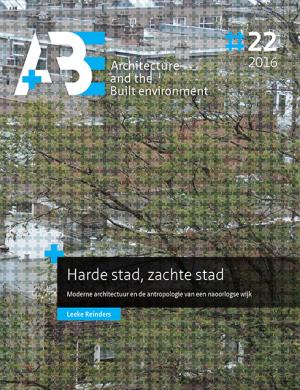
There is something irrevocable in architecture. In contrast with a painting or a musical play, one cannot alter an architectural work of art other than by blowing it up or pulling it down. Streets, buildings, squares and parks are part of the hard, physical environment in which we organize our lives. But why conceptualize architecture as a finished product? What happens when the plans have been drawn, the buildings completed, the public space decorated and the pictures taken for design...

This pioneering research focuses on Biomimetic Interactive Architecture using “Computation”, “Embodiment”, and “Biology” to generate an intimate embodied convergence to propose a novel rule-based design framework for creating organic architectures composed of swarm-based intelligent components. Furthermore, the research boldly claims that Interactive Architecture should emerge as the next truly Organic Architecture. As the world and...

In the Dutch National Environmental Vision 2021, new living and working locations are mapped on existing urbanized sites - mainly at catchment areas of public transportation (PT) nodes or stations [1]. This is the case in the metropolitan area of Rotterdam, where new developments projects are taking place at several station locations. In the Rotterdam Mobility Plan [2] “inclusiveness in mobility” is emphasized by setting several objectives for a PT node. These objectives address the...
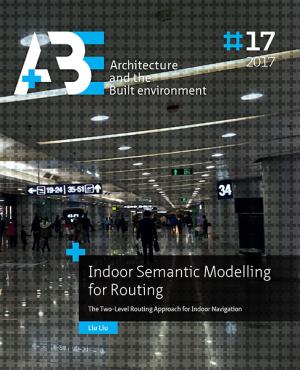
Humans perform many activities indoors and they show a growing need for indoor navigation, especially in unfamiliar buildings such as airports, museums and hospitals. Complexity of such buildings poses many challenges for building managers and visitors. Indoor navigation services play an important role in supporting these indoor activities. Indoor navigation covers extensive topics such as: 1) indoor positioning and localization; 2) indoor space representation for navigation model...

The construction industry is a project-based sector with a myriad of actors such as architects, construction companies, consultants, producers of building materials (Anumba et al., 2005). The interaction between the project partners is often quite limited, which leads to insufficient knowledge sharing during the project and knowledge being unavailable for reuse (Fruchter et al. 2002). The result can be a considerable amount of extra work, delays and cost overruns. Design outcomes that are...

Heritage–natural and cultural, material and immaterial–plays a key role in the development of sustainable cities and communities. Goal 11, target 4, of the Sustainable Development Goals (SDGs) emphasizes the relation between heritage and sustainability. The International LDE Heritage conference on Heritage and Sustainable Development Goals, which took place from 26 to 28 November 2019 at TU Delft in the Netherlands, examined the theories, methodologies, and practices of heritage and SDGs....

Following the UN world summits on Climate Change (Paris 2015) and Habitat (Quito 2016), most European cities assume an active role to implement internationally agreed goals related to climate change, translated in the so-called New Urban Agenda. At the same time, the urban housing market is increasingly inaccessible for low- and middle-income households. To overcome problems such as failing housing supply and high energy-bills, groups of residents take initiatives to create and manage...

This book is about the educational practice of two teachers of architecture, Max Risselada and Hans Tupker. They represent a new kind of teacher that came into being along with the wave of democracy that washed over the educational institutes in the late 60s and early 70s of the last century. Risselada’s and Tupker’s teaching is not the derivative of their architectural practice. On the contrary, they belong to the first generation of professional teachers. This new figure of the...
